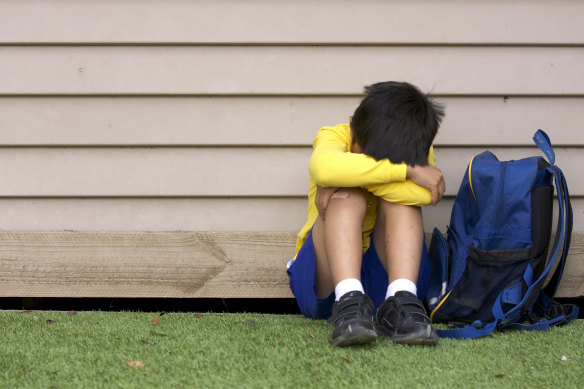More than 50 per cent of West Australian teachers have asked for support dealing with wellbeing and mental health issues appearing in their classrooms, a new study has found, as burnout and linked staff shortages exacerbate the issue.
The Every Child Every Opportunity report from national not-for-profit Schools Plus found the growing issue was playing out mostly at the more disadvantaged schools across the state and nationally, likely in regional areas.

New findings reveal the compounding impact of teacher burnout and shortages is having on school communities.Credit: iStock
Between 2018 and 2023, WA schools sought over $4.6 million in funding from Schools Plus to address the wellbeing and mental health challenges emerging in their communities.
In 2018, those applications made up 30 per cent of all requests. In 2023, that number skyrocketed to 53 per cent.
A WA early childhood teacher working in the regions, who has remained anonymous to protect their job, has said it was difficult to meet individual student needs when they were so varied.
They also said it was difficult for local families to secure a timely face-to-face appointment with a medical professional, which made it hard for children’s needs to be met outside the classroom too.
These issues are also impacting on teacher burnout.
“Like everywhere else in WA, teachers are burning out due to the high workload and working conditions. Staff shortages and lack of relief teachers are adding to this, especially in regional and remote areas,” the teacher said.
“It can be difficult to have a work-life balance – you always feel like you could be doing more, you often work out of school hours and during your holidays, you always feel guilt when you have a sick day or time off for professional learning, and you’re always thinking about your students and ways you can support them.”
School Plus chief-executive Sherrill Nixon said poor student wellbeing was showing up in classrooms and playgrounds in the form of bad behaviour, learning disengagement and an inability to form relationships with others.
“Equally, more support is needed to help our educators. The lack of adequate resourcing is leading to higher teacher burnout and increased intentions to leave the profession,” she said.
But Nixon said there were clear solutions to address the problem.
The first was to provide more professional development for teachers which centred on creating safe and supportive learning environments, identifying student needs, and implementing strategies to support student engagement in learning.
All disadvantaged schools should also have access to trained and dedicated ‘wellbeing navigators’, Nixon said, to coordinate effective identification, prevention, and early intervention wellbeing and mental health strategies.
And schools needed ‘wellbeing hubs’ that included timely and affordable access to on-site experts such as GPs, psychologists, and social workers.
“These recommendations – if expanded to more disadvantaged schools – will lead to improved children’s wellbeing and learning outcomes, support educators and drive enhanced outcomes for society,” Nixon said.
Start the day with a summary of the day’s most important and interesting stories, analysis and insights. Sign up for our Morning Edition newsletter.